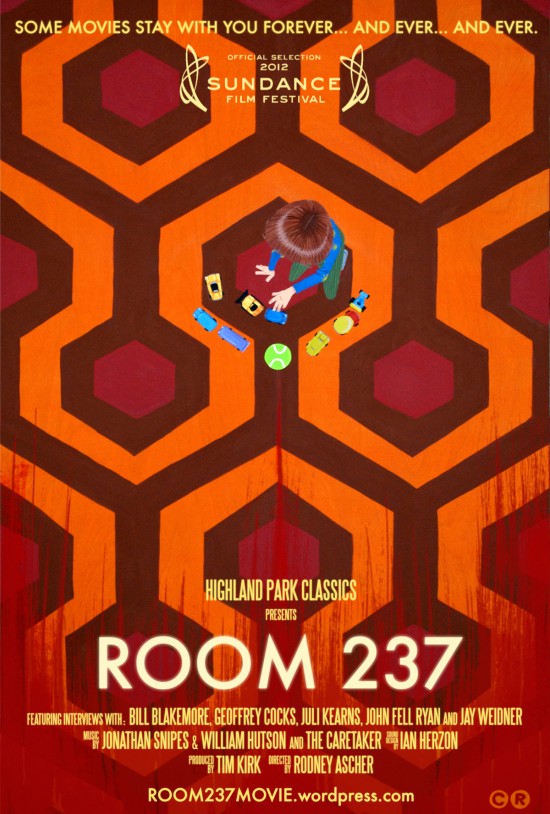'Room 237' Explores Fantastic Theories Behind Stanley Kubrick's 'The Shining' [Sundance 2012]
If Stanley Kubrick were still alive, Room 237 would make him extremely happy. Directed by Rodney Ascher, the experimental documentary gives the legendary filmmaker a ton of credit, maybe too much at times, as it explores several wild, and not so wild, theories about his 1980 horror masterpiece The Shining.
Some theories, such as the suggestion that the film is a metaphor for the murder of Native Americans, are almost plausible. Others, like that insinuation that Kubrick made the film to clue everyone in that he faked the footage of the Moon landing, are much less believable. But no matter the case, Ascher's film is a fascinating, funny and incredibly well made ode to a film that's obviously way more dense than most of us give it credit for. The documentary is an absolute must-see.
Room 237 played as part of the New Frontier category of the 2012 Sundance Film Festival and, after the jump, you can check on the poster and read more about it.
Let's get this out of the way. While all of Room 237 is told via voiceover, the visuals are entirely made up of found footage. Most of it is from Kubrick's films but there's also stock stuff, digitally altered images and shots from movies like All The President's Men and Schindler's List. Basically the filmmakers used anything that would make their point without showing the people talking. Because of that, it seems like Room 237, as it stands now, would be impossible to release. The clearances for all the footage and images would likely be incredibly expensive, or wrapped in red tape, if it were to have theatrical distribution. So the off-chance you may never get to see it is the bad news. (Fingers crossed that we're wrong.)
The good news is that I've seen it, can tell you about it, and it's fantastic.
Room 237 is broken into nine sections, each of which do their best to convince you that The Shining has some kind of alternative, hidden subtext. The most controversial and well-known theory is the Moon landing justification. The explanations for it range from laughable to interesting. Other ideas include The Shining being an anti-holocaust piece.
Several of the other chapters dissect the production design and mise en scene of the film in excruciating detail. For example, one woman has made detailed maps of the Overlook and decided it couldn't be a real structure. Another believes Kubrick was so obsessed with subliminal advertising at the time, he flooded the movie with sexual images. And yet another believes Kubrick composed the film to be a mirror unto itself and, to illustrate, we watch several scenes from The Shining overlapped from two different sources: One running the film forward, the other running it backward. The results are jaw-dropping.
Through all of this, the film's main message shines through. Whether or not Kubrick meant the film to do any of these things, there are definite arguments to be made. Art isn't always up to the artist. A fan's obsession can come into play too.
Room 237 is a must watch for any fan of film, especially Stanley Kubrick and particularly for those who love The Shining. It places itself among the elite documentaries made on the mysterious auteur. Hopefully any obstacles that need to be overcome in order to secure a release will be, and audiences will get a chance to see this phenomenal work.
/Film rating – 9 out of 10
Finally, here's the very cool poster for Room 237:

